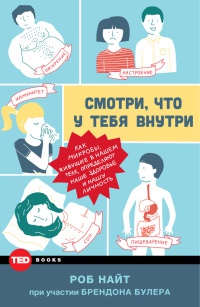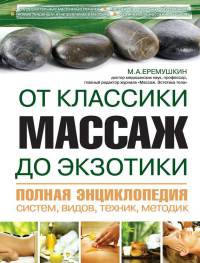Книга Микробы хорошие и плохие. Наше здоровье и выживание в мире бактерий - Джессика Снайдер Сакс
Шрифт:
Интервал:
Закладка:
78 Amee Manges et al., “Widespread Distribution of Urinary Tract Infections Caused by a Multidrug-Resistant Escerichia coli Clonal Group”, New England Journal of Medicine 345 (2001), 1007–1013;
“An Epidemic of Urinary Tract Infections?” New England Journal of Medicine 345 (2001), 1055–1057.
79 M. M. Swann, Report of the Joint Committee on the Use of Antibiotics in Animal Husbandry and Veterinary Medicine (London: Her Majesty’s Stationery Office, 1969).
80 Henrick Wegener, “Ending the Use of Antimicrobial Growth Promoters Is Making a Difference: In Denmark Antibiotic Resistance Levels Fell While Food Productivity Remains Strong”, American Society of Microbiology News 69 (2003), 443–448.
81 Ingo Klare et al., “Occurrence and Spread of Antibiotic Resistances in Enterococcus faecium”, International Journal of Food Microbiology 88 (2003), 269–290.
82 F. Angulo et al., “Isolation of Quinupristin / Dalfopristin-Resistant Enterococcus faecium from Human Stool Specimens and Retail Chicken Products in the United States”, First International Conference on Enterococci, Banff, Canada, February 2000.
83 Amy Kieke et al., “Use of Streptogramin Growth Promoters in Poultry and Isolation of Streptogramin-Resistant Enterococcus faecium from Humans”, Journal of Infectious Diseases 194 (2006), 1200–1208.
Часть 5. Брать хитростью, а не силой
1 Aging of Veterans of the Union Army: Military, Pension and Medical Records, 1820–1940 (ICPSR 6837); A. J. Bollet, “Rheumatic Diseases Among Civil War Troops”, Arthritis and Rheumatism 34 (1991), 11971203; Gina Kolata, “So Big and Healthy Nowadays, Grandpa Wouldn’t Know You”, New York Times, July 30, 2006, A1.
2 Robert Fogel, Dora Costa, “A Theory of Technophysio Evolution, with Some Implications for Forecasting Population, Health Care Costs, and Pension Costs”, Demography 34 (1997), 49–66; Dora Costa, “Understanding the 20th-Century Decline in Chronic Conditions Among Older Men”, Demography 37 (2000) 53–72; Dora Costa, “Why Were Older Men in the Past in Such Poor Health”, web.mit.edu / costa / www / papers.html.
3 Jianhui Zhu et al., “Prospective Study of Pathogen Burden and Risk of Myocardial Infarction or Death”, Circulation 103 (2001), 45–51; Jean-Louis Georges et al., “Impact of Pathogen Burden in Patients with Coronary Artery Disease in Relation to Systemic Inflammation and Variation in Genes Encoding Cytokines”, American Journal of Cardiology 92 (2003), 515–521.
4 Caleb Finch, Eileen Crimmins, “Inflammatory Exposure and Historic Changes in Human Life-Spans”, Science 305 (2004), 1736–1739; Eileen Crimmi, Caleb Finch, “Infection, Inflammation, Height and Longevity”, Proceedings of the National Academy of Sciences 103 (2006), 498–503.
5 R. Montenegro, C. Stephens, “Indigenous Health in Latin America and the Caribbean”, Lancet 367 (2006), 1859–1869.
6 Rudi Westendorp et al., “Optimizing Human Fertility and Survival”, Nature Medicine 7 (2001), 873; G. Doblhammer, J. Oeppen, “Reproduction and Longevity: The Effect of Frailty and Health Selection”, Proceedings of the Royal Society of London 270 (2003), 1541–1547; D. Lio et al., “Inflammation, Genetics, and Longevity”, Journal of Medical Genetics 40 (2003), 296–299.
7 Rudi Westendorp, “Are We Becoming Less Disposable?” EMBO Reports 5 (2004), 2–6.
8 Y. W. Miller et al., “Sequential Antibiotic Therapy for Acne Promotes the Carriage of Resistant Staphylococci on the Skin of Contacts”, Journal of Antimicrobial Chemotherapy 38 (1996), 829–837; David Margolis et al., “Antibiotic Treatment of Acne May Be Associated with Upper Respiratory Tract Infections”, Archives of Dermatology 141 (2005), 1132–1136; Ross Levy et al., “Effect of Antibiotics on the Oropharyngeal Flora in Patients with Acne”, Archives of Dermatology 139 (2003), 467–471.
9 K. G. Naber, “Treatment Options for Acute Uncomplicated Cystitis in Adults”, Journal of Antimicrobial Chemotherapy 46 (2000), S23 – S277.
10 Susan Swedo et al., “Pediatric Autoimmune Neuropsychiatric Disorders Associated with Streptococcal Infections: Clinical Description of the First 5 °Cases”, American Journal of Psychiatry 155 (1998), 264–271; F. Breedveld et al., “Minocycline Treatment for Rheumatoid Arthritis: An Open Dose Study”, Journal ofRheumatology 17 (1990), 43–46.
11 Marie-Therese Labro, “Antibiotics as Anti-inflammatory Agents”, Current Opinions in Investigational Drugs 3 (2002), 61–68; P. N. Black,
“Anti-inflammatory Effects of Macrolide Antibiotics”, European Respiratory Journal 10 (1997), 971–972.
12 J. Thomas Grayston, “Does Chlamydia pneumoniae Cause Atherosclerosis?” Archives of Surgery 134 (1999), 930–934; J. D. Beck et al., “Dental Infections and Atherosclerosis”, American Heart Journal 138 (1999), S528 – S533.
13 Francisco Gimenez-Sanchez et al., “Treating Cardiovascular Disease with Antimicrobial Agents: A Survey of Knowledge, Attitudes, and Practices Among Physicians in the United States”, Clinical Infectious Diseases 33 (2001), 171–176.
14 Christopher Cannon et al., “Antibiotic Treatment of Chlamydia pneumoniae After Acute Coronary Syndrome”, New England Journal of Medicine 352 (2005), 2545–2554; Thomas Grayston et al., “Azithromycin for the Secondary Prevention of Coronary Events”, New England Journal of Medicine 352 (2005), 1637–1645.
15 Jeffrey Anderson, “Infection, Antibiotics and Atherothrombosis – End of the Road or New Beginnings”, New England Journal of Medicine 352 (April 21, 2005), 1706–1709.
16 WHO Annual Report on Infectious Disease: Overcoming Antimicrobial Resistance (Geneva: World Health Organization, 2000), имеется в сети по адресу: www.who.int / infectious-disease-report / 2000/.
17 Amy Pruden et al., “Antibiotic Resistance Genes as Emerging Contaminants: Studies in Northern Colorado”, Environmental Science and Technology 40 (2006), 7445–7450.
18 Elissa Ladd, “The Use of Antibiotics for Viral Upper Respiratory Tract Infections: An Analysis of Nurse Practitioner and Physician Prescribing Practices in Ambulatory Care, 1997–2001”, Journal of the American Academy of Nurse Practitioners 17 (2005), 416–424; Arch Mainous III et al., “Trends in Antimicrobial Prescribing for Bronchitis and Upper Respiratory Infections Among Adults and Children”, American Journal of Public Health 93 (2003), 1910–1914.
19 H. Bauchner et al., “Parents, Physicians, and Antibiotic Use”, Pediatrics 103 (1999), 395–398; R. L. Watson et al., “Antimicrobial Use for Pediatric Upper Respiratory Infections: Reported Practice, Actual Practice, and Parent Beliefs”, Pediatrics 104 (1999), 12511257; R. L. Watson et al., “Inappropriateness and Variability of Antibiotic Prescription Among French Office-Based Physicians”, Journal of Clinical Epidemiology 51 (1998), 61–68; E. E. L. Wang et al., “Antibiotic Prescribing for Canadian Preschool Children: Evidence of Overprescribing for Viral Respiratory Infections”, Clinical Infectious Diseases 29 (1999), 155–160; L. F. McCaig, J. M. Hughes, “Trends in Antimicrobial Drug Prescribing Among Office Based Physicians in the United States”, Journal of the American Medical Association 273 (1995), 214–219.

























